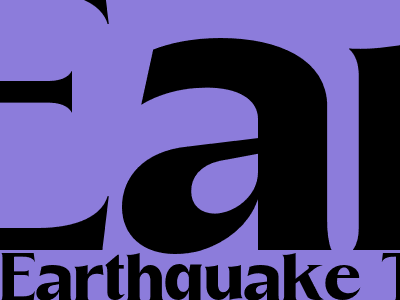Earthquake Today: Understanding the Science and Impact
What is an Earthquake?
An earthquake is a sudden, rapid shaking of the earth's crust caused by the movement of tectonic plates. These plates are vast slabs of rock that cover the globe, fitting together like a giant puzzle. When stresses build up at the boundaries between these plates, the energy is released as an earthquake.
Types of Earthquakes
There are three main types of earthquakes:
- Tectonic earthquakes: Caused by the movement of tectonic plates.
- Volcanic earthquakes: Associated with volcanic activity.
- Collapse earthquakes: Result from the collapse of underground structures.
Measuring Earthquakes
Earthquakes are measured using two scales:
- Richter scale: Measures the magnitude of an earthquake based on the amplitude of seismic waves recorded on seismographs.
- Mercalli scale: Assesses the intensity of an earthquake based on its observed effects on people, structures, and the environment.
Impact of Earthquakes
Earthquakes can have significant impact, including:
- Ground shaking: The primary hazard, causing damage to buildings, infrastructure, and natural landscapes.
- Tsunamis: Giant waves generated by earthquakes occurring under or near the ocean.
- Liquefaction: The process by which saturated soil loses strength and behaves like a liquid.
- Landslides: Slope failures triggered by seismic shaking.
- Fault rupture: The breaking of the earth's crust along a fault line, causing visible displacement.
Earthquake Preparedness
Preparing for earthquakes is crucial:
- Know your risks: Assess your area's earthquake hazard level and identify potential evacuation routes.
- Secure your home: Anchor heavy objects, such as bookshelves and appliances, and ensure structural integrity.
- Create an emergency plan: Establish a communication plan, emergency meeting points, and evacuation procedures.
- Stock emergency supplies: Include water, food, first-aid kits, flashlights, and a battery-powered radio.
- Practice earthquake drills: Regularly conduct drills to familiarize your family with what to do in an earthquake.
Conclusion
Earthquakes are a natural phenomenon that pose significant risks, but with preparation and understanding, we can mitigate their impact and protect ourselves and our communities. Staying informed, adhering to safety protocols, and investing in earthquake-resistant infrastructure are essential measures for minimizing the devastating effects of earthquakes.

Comments